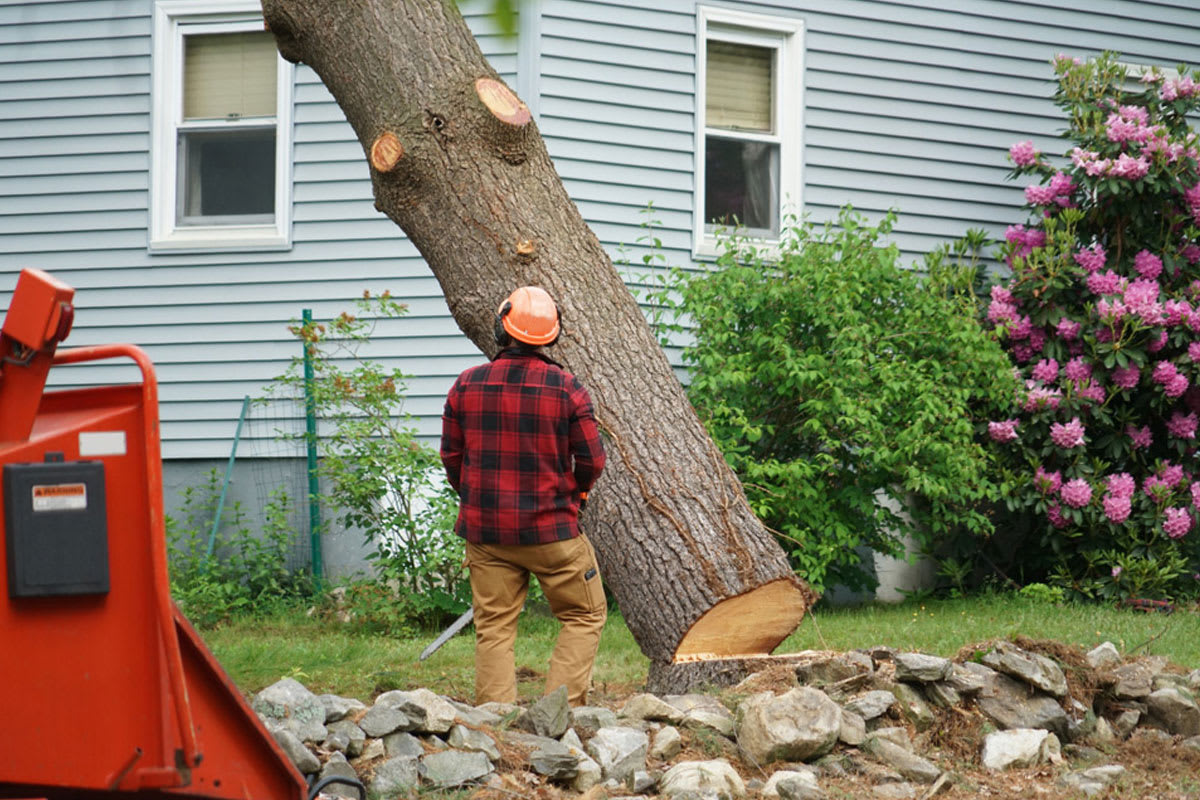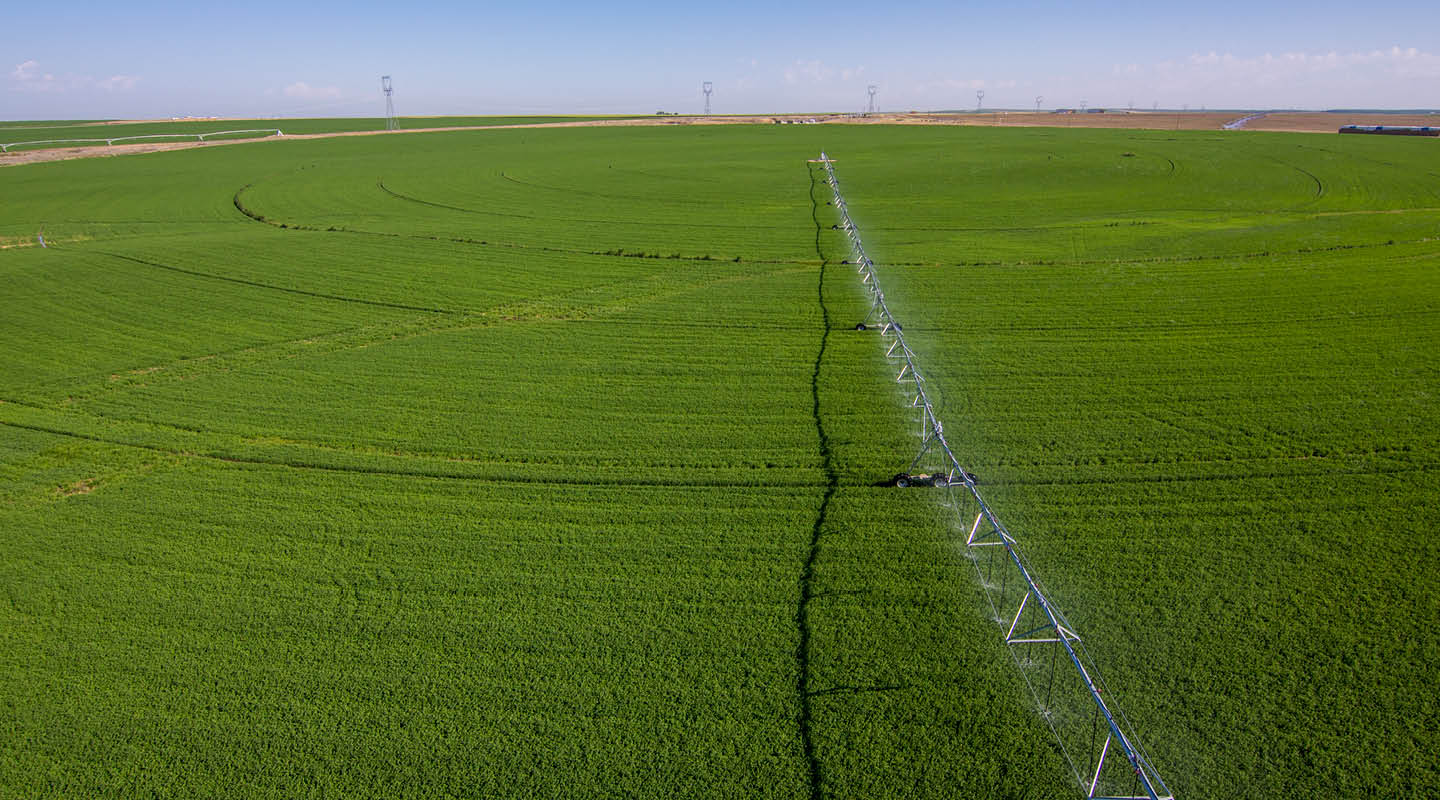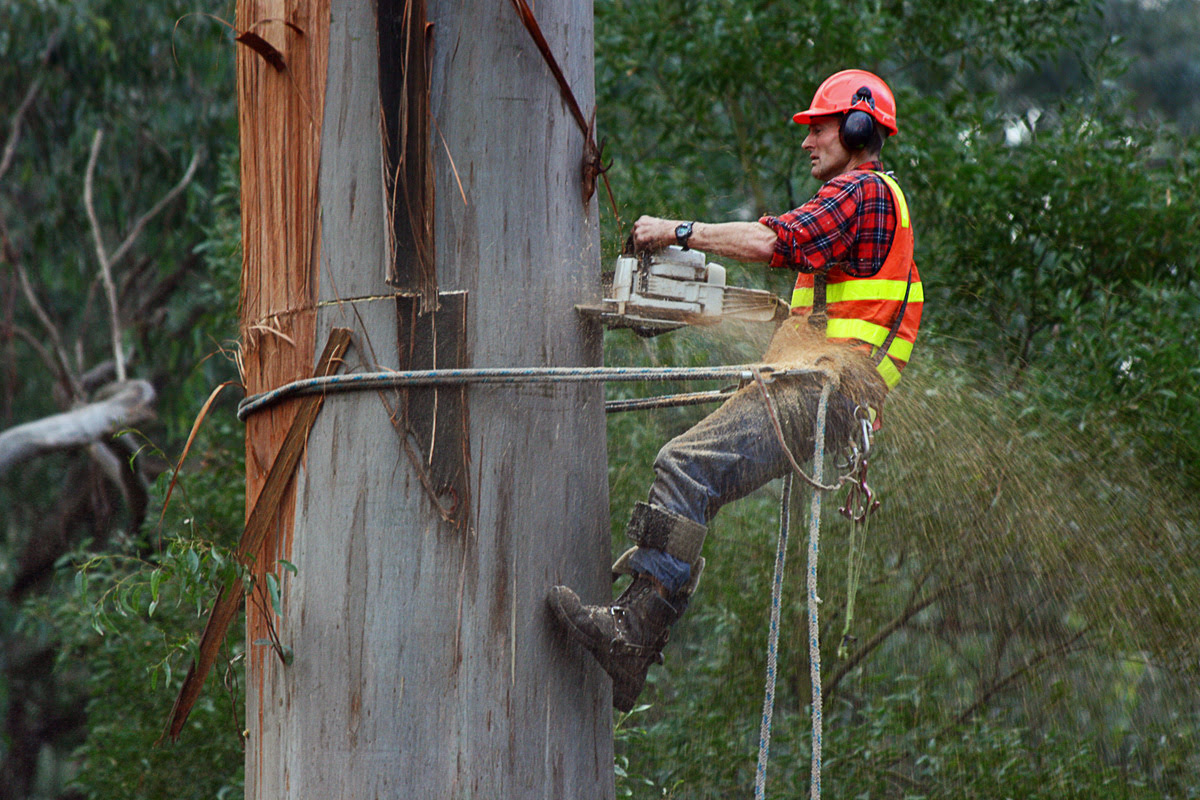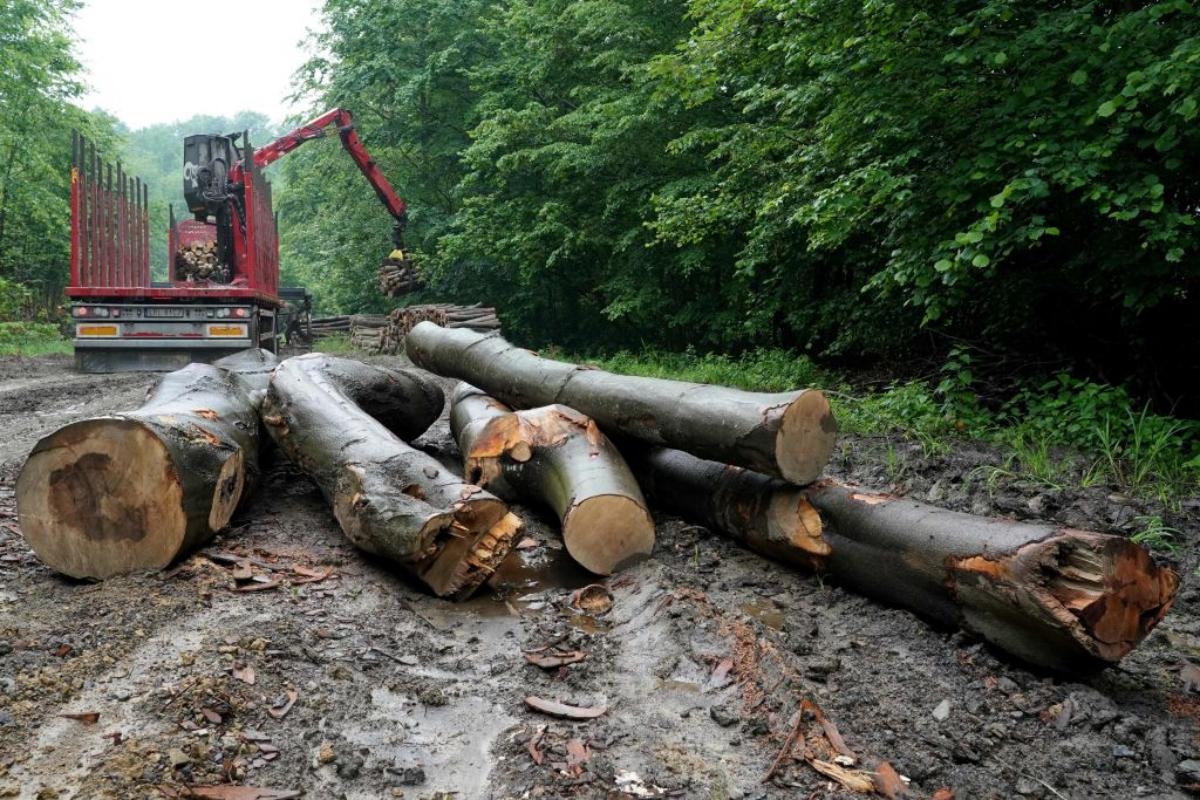Home>Gardening Tips and Tricks>Maximizing Yield>How Much Does It Cost To Have Trees Cut Down


Maximizing Yield
How Much Does It Cost To Have Trees Cut Down
Published: October 28, 2023
Find out the cost of tree removal services and discover tips for maximizing yield. Safely cut down trees in your area with expert guidance.
(Many of the links in this article redirect to a specific reviewed product. Your purchase of these products through affiliate links helps to generate commission for Chicagolandgardening.com, at no extra cost. Learn more)
Table of Contents
Introduction
Tree removal is a task that should not be taken lightly. Whether you have a tree that is diseased, dead, or poses a threat to surrounding structures, it is crucial to understand the cost involved in hiring a professional to handle the job. Trees can be complex and dangerous to remove, requiring specialized equipment and expertise. Therefore, it is essential to factor in various aspects that can impact the overall cost of tree removal.
When considering tree removal, there are several factors that need to be taken into account. These factors can include the size and height of the tree, its location, the degree of difficulty in accessing the tree, any potential hazards, and any additional services required, such as stump grinding or debris removal. Each of these factors can significantly impact the overall cost of the tree removal service.
It is important to remember that tree removal is a specialized task that requires professional knowledge and experience. While it may be tempting to attempt to remove a tree on your own, this can lead to safety hazards and potential damage to property. Hiring a professional tree removal service ensures that the job is done safely, efficiently, and with proper equipment.
Understanding the average cost of tree removal services can help you budget for the task and avoid any unexpected expenses. The cost can vary depending on several factors, including the size and type of tree, the complexity of the job, and the location of the tree. By having a general idea of the average costs in your area, you can make informed decisions when hiring a tree removal service.
It is also important to consider additional factors that can impact the cost of tree removal. For example, some trees may require permits from local authorities if they are located in protected areas or if they have historical significance. Additionally, the presence of power lines or other obstacles may increase the complexity of the job and, consequently, the cost.
In the following sections, we will delve deeper into the factors affecting the cost of tree removal, explore the average costs of tree removal services, discuss additional factors to consider, and examine the pros and cons of DIY tree removal versus hiring a professional.
Factors Affecting the Cost of Tree Removal
Several factors can influence the cost of tree removal services. Understanding these factors will help you determine the approximate price range for removing a tree from your property. Here are the key factors that can affect the cost:
- Size and Height of the Tree: The size and height of the tree play a vital role in determining the cost of removal. Taller and larger trees require more time, effort, and specialized equipment to safely remove. Therefore, they generally come with a higher price tag.
- Type of Tree: The type of tree being removed can also impact the cost. Some trees are more challenging to remove due to their root systems, density of the wood, or specific characteristics. For example, hardwood trees like oak or maple can be more difficult to remove compared to softer wood trees like pine.
- Location of the Tree: The location of the tree is another critical factor. If the tree is located in a hard-to-reach area or surrounded by obstacles like buildings, fences, or power lines, it will require additional effort and precautionary measures to ensure safe removal. This can increase the overall cost.
- Complexity of the Job: The complexity of the job refers to any additional challenges or risks associated with the tree removal process. If the tree is leaning dangerously, has extensive damage, or is close to other structures that need to be protected, the complexity of the job will increase, leading to higher costs.
- Required Equipment and Tools: The equipment and tools needed for tree removal can also impact the cost. Certain trees may require specialized equipment like cranes or bucket trucks to safely remove them. The use of such equipment will add to the overall expenses.
- Additional Services: Additional services such as stump grinding or debris removal may be necessary depending on your specific requirements. These services are usually offered at an additional cost.
Keep in mind that each tree removal project is unique, and the cost will vary based on these factors. It is advisable to consult with a professional tree removal service to assess your specific situation and provide an accurate estimate.
Average Cost of Tree Removal Services
When determining the average cost of tree removal services, it’s important to consider the various factors discussed earlier. The costs can vary based on the complexity of the job, the size and height of the tree, the location, and any additional services required. While it’s challenging to provide an exact cost without assessing the specifics of the project, we can provide a general price range based on national averages.
For smaller trees with a height of 15 feet or less, the average cost of removal ranges between $150 and $500. This estimate includes straightforward jobs that don’t require additional equipment or services. However, keep in mind that the actual price can be lower or higher depending on the factors mentioned earlier.
For medium-sized trees ranging from 15 to 30 feet in height, the average cost of removal can range from $500 to $1000. These trees may require more labor and specialized equipment, which contributes to the higher cost. If there are any obstacles or complexities involved, such as difficult access or proximity to structures, the price may be on the higher end of the range.
For larger trees exceeding 30 feet in height, the cost of removal can range from $1000 to $3000 or more. Removing tall and massive trees is a complex and time-consuming task. It often requires heavy-duty equipment, such as cranes or bucket trucks, to ensure safe and efficient removal. The location, complexity, and additional services needed will also influence the final cost.
Remember, these figures are just average estimates and can vary significantly based on your location and specific circumstances. It’s crucial to obtain detailed quotes from reputable tree removal companies in your area to get a more accurate idea of the costs associated with your specific project.
Keep in mind that while the cost may seem high, professional tree removal is an investment in the safety and aesthetics of your property. Hiring professionals ensures the job is done correctly, mitigating the risk of damage to surrounding structures and minimizing any dangers associated with tree removal.
Additional Factors to Consider
When planning for tree removal, there are several additional factors to consider, aside from the size, type, and location of the tree. These factors can impact the overall cost and the process of removing the tree. Here are some crucial considerations:
- Permits and Regulations: Depending on your location, there may be specific permits or regulations that need to be followed when removing a tree. Some areas have restrictions on cutting down certain tree species or require permits for tree removal in protected zones. It’s essential to check with your local authorities and ensure compliance, as failure to do so can result in penalties or fines.
- Debris Removal: Tree removal often generates a significant amount of debris, including branches, logs, and leaves. While some tree removal services include debris removal in their pricing, others might charge an additional fee. Discuss this with the service provider to understand the extent of debris removal and any associated costs.
- Stump Grinding: If you want to remove the tree stump as well, stump grinding is typically an additional service. Stump grinding involves using specialized equipment to grind the stump into small wood chips. Prices for stump grinding can vary depending on the size of the stump and the difficulty of access. Discuss this with the tree removal service to understand the cost implications.
- Emergency Situations: In some cases, tree removal becomes necessary due to emergency situations, such as storm damage or a fallen tree. Emergency tree removal may incur additional fees due to the urgency and increased risk involved. It’s important to discuss these situations with the tree removal service and understand their emergency response policy and associated costs.
- Tree Health Assessment: Sometimes, trees that appear to be dead or dying might still have the potential to be saved. Before opting for complete removal, consider consulting with an arborist who can assess the tree’s health and provide recommendations. If the tree can be revived, it could save you the cost of removal while preserving the natural beauty of your landscape.
By considering these additional factors, you can make more informed decisions when hiring a tree removal service. It’s essential to discuss these aspects with the service provider and have a clear understanding of any associated costs before proceeding with the removal.
DIY vs Hiring a Professional
When it comes to tree removal, you might be tempted to take on the task yourself as a cost-saving measure. While there are some cases where a DIY approach might be feasible, it’s crucial to consider the risks, expertise required, and potential consequences before making a decision. Here are some points to consider when weighing the options of DIY tree removal versus hiring a professional:
- Safety: Tree removal can be dangerous, especially when dealing with larger trees or those in precarious positions. Professionals have the necessary equipment, training, and experience to safely remove trees without causing harm to people or property. DIY tree removal can lead to accidents, injuries, and property damage if proper safety protocols are not followed.
- Expertise: Removing a tree requires specialized knowledge about tree anatomy, cutting techniques, and understanding potential risks. Professionals have the expertise to assess the tree’s health, identify potential hazards, and determine the best approach for safe removal. Without proper knowledge, DIY tree removal can result in incorrect cuts, falling branches, or the tree leaning in an unintended direction.
- Equipment: Tree removal often requires specialized equipment such as chainsaws, ropes, and stump grinders. Purchasing or renting this equipment can add significant costs to a DIY project. Professionals come equipped with the necessary tools, ensuring efficient and safe removal.
- Property Protection: Tree removal can pose a risk to nearby structures, power lines, and landscaping. Professionals are skilled at managing these risks and taking precautions to minimize potential damage. If you attempt DIY tree removal and unintentionally cause damage, you may be liable for the repairs or face legal consequences.
- Easier and Faster Process: Professionals can complete the tree removal process much faster and more efficiently than an inexperienced individual. They have a team of trained professionals who work together to execute the job with precision. DIY tree removal can take a significant amount of time and effort, especially for complex or large trees.
- Insurance Coverage: Hiring a professional tree removal service often comes with insurance coverage. This coverage protects you from any liability in the event of accidents or damages during the tree removal process. If you choose a DIY approach and something goes wrong, you may be responsible for any resulting costs.
While DIY tree removal might be suitable for small, uncomplicated trees with low risks, it is generally recommended to hire a professional for larger trees, trees close to structures, or trees with potential hazards. Investing in professional tree removal ensures the safety of yourself, your property, and the surrounding environment.
If budget is a concern, consider obtaining quotes from several reputable tree removal services. They may be able to provide options that fit within your budget while still ensuring safe and efficient removal. Ultimately, hiring a professional will save you time, effort, and potential risks associated with DIY tree removal.
Conclusion
Tree removal is a task that requires careful consideration to ensure safety, efficiency, and minimize potential risks. The cost of tree removal services can vary based on factors such as tree size, height, type, location, complexity, and additional services required. By understanding these factors, you can have a better idea of the average cost and budget accordingly.
When deciding between DIY tree removal and hiring a professional, it is important to prioritize safety and expertise. While small, straightforward tree removal projects may be feasible for a DIY approach, larger or more complex trees should be handled by professionals who have the necessary skills, experience, and equipment.
Consider the risks associated with improper tree removal, including accidents, injuries, and property damage. Professionals offer the expertise, safety protocols, and insurance coverage to ensure the job is done safely and efficiently.
Remember to consider additional factors such as permits, debris removal, stump grinding, and emergency situations when calculating the cost of tree removal. Obtaining quotes from reputable tree removal services will provide a more accurate estimate based on your specific requirements.
Tree removal is an investment in maintaining the safety and aesthetics of your property. Hiring a professional may seem like a larger upfront cost, but it allows for a smoother and more secure process, ultimately saving you time, effort, and potential future expenses.
Consulting with a professional tree removal service will provide you with the necessary guidance and expertise to tackle your tree removal project. By prioritizing safety, efficiency, and budgeting effectively, you can ensure a successful tree removal experience while preserving the integrity and beauty of your property.










